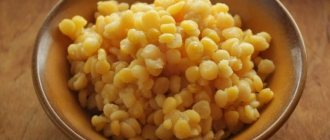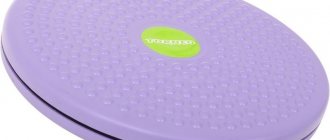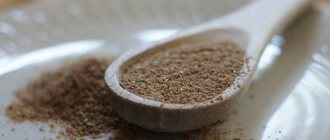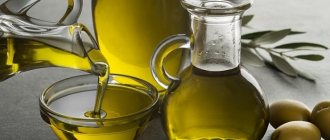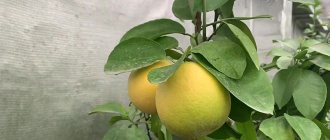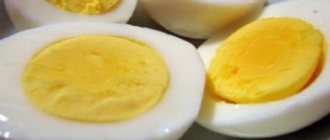A healthy and dietary diet should include foods that combine satiety and low calories. Pistachios satisfy these requirements. Thanks to its rich chemical composition, the product has a number of health benefits. Pistachios benefit both men and women (including pregnant women), as well as children. Regular use of the product allows you to lose excess weight. However, the benefits of taking nuts can only appear if there are no contraindications.
Nutritional and energy value
Nutrient content of 100 grams of pistachios:
| BJU | Content, g |
| Squirrels | 20,61 |
| Fats | 44,44 |
| Carbohydrates | 27,97 |
The nutritional value of a 100 g serving of the product is 2330 kJ, calorie content is 557 kcal.
One serving of pistachios can saturate the body with a third of the daily calories.
Pistachios: what kind of nut is this?
Pistachio is a relative of cashew, a long-lived desert tree. 300-year-old specimens up to 10 meters high are not uncommon. The plant is hardy, tolerates saline soils well and does not like excess moisture.
The harvest ripens by the end of July - beginning of August. From a botanical point of view, the fruit is not a nut, but a drupe. The edible part is the only seed with light green flesh. It has a hard, cream-colored outer shell. When the seed ripens, the shell partially opens. At the same time, a characteristic clap is heard.
Pistachio trees are common in the Mediterranean countries, on the coast of the Caspian Sea and Transcaucasia. There are 20 types of plants, but not all fruits are edible. Here they can be found in Crimea, the Krasnodar Territory (from Sukko to Gelendzhik), and in the Caucasus.
One of the most famous specimens is located in Chufut-Kale. Right from under the foundation of the Janike-Khanym mausoleum, the blunt-leaved (wild) pistachio has been growing for more than 500 years. Its roots go to the grave of the daughter of the Golden Horde Khan Totkhamysh. The same one that once took Moscow...
Compound
The product is famous for its high content of B vitamins, especially B6. According to this indicator, pistachios can even compete with beef liver. The chemical elements present in the product include:
- copper;
- manganese;
- potassium;
- phosphorus;
- zinc;
- magnesium;
- vanadium;
- silicon;
- cobalt;
- zirconium;
- tin;
- selenium;
- calcium;
- sodium;
- iodine;
- boron;
- strontium;
- molybdenum;
- nickel;
- titanium;
- sulfur;
- chlorine.
Pistachios are the only nut that contains carotenoids such as zeaxanthin and lutein. These substances strengthen bone tissue and help preserve vision. The product is the absolute leader among nuts in terms of fiber content, which helps cleanse the body of toxins.
Calorie content and nutritional value of the product
We will tell you in detail about the calorie content of pistachios per 100 grams and one piece - this will allow you to regulate the amount of food consumed per day. Don’t panic, the numbers will be large - but a little later we’ll talk about the chemical composition of nuts, and you will understand that you shouldn’t be afraid of gaining weight, of course, if you don’t eat 100+ grams every day!
First, let's discuss the numbers per 100 grams:
- Calorie content of salted pistachios – 569 Kcal;
- Calorie content per serving of raw nuts – 560 Kcal;
- Fried fruits have the same calorie content - 572 Kcal.
What's in one thing?
- An unshelled nut weighs one and a half grams and contains 3.7 kcal;
- The peeled fruit weighs about a gram and contains 5.6 kcal.
Now you understand how many calories are in salted pistachios - so as not to worry about excess weight, let’s discuss the composition of the product:
- Calcium. Improves blood clotting, strengthens bone strength;
- Chlorine. Needed to relieve swelling, supports normal liver function;
- Potassium. Helps regulate fluid balance, normalizes intestinal motility;
- Sulfur. Improves blood clotting, normalizes blood sugar levels;
- Sodium. Dilates blood vessels, promotes the production of gastric juice;
- Magnesium. Helps coordinate heart rate, lowers blood pressure and strengthens tooth enamel;
- Phosphorus. Provides support for acid-base balance, strengthens teeth and bones;
- Aluminum. Supports the functioning of the thyroid gland and forms skin tissue;
- Zinc. Improves reproductive function and relieves stress;
- Manganese. Promotes bone tissue growth, stabilizes digestive processes;
- Iron. Supports the functioning of the immune system and increases hemoglobin levels.
We also recommend: How to cook a pine cone
These are the microelements, macroelements and minerals it contains. What vitamins are contained in pistachios? A whole list!
- B1 stimulates the development of brain activity;
- B2 improves eye function, reduces the risk of developing cataracts;
- B3 gives an influx of strength, helps fight skin diseases;
- B5 promotes the burning of excess fat;
- B6 helps maintain normal sugar levels;
- B7 improves the health of skin, nails and hair;
- B9 strengthens the immune system and digestive system;
- E regenerates skin cells and lowers blood pressure.
Important! Of course, salted pistachios are not as healthy as raw/roasted ones, since salt is quite harmful. And they have higher calorie content. Consider this factor before adjusting your daily serving size.
And now an equally important point - BJU of pistachios per 100 grams (raw/fried and salted):
- Proteins – 20.2/21.1 g;
- Fats – 45.3/45.8 g;
- Carbohydrates – 16.6/17.3 g;
- Dietary fiber – 10.6/10.3 g.
The calorie content and nutritional value of pistachios are quite balanced, and most of the fats are of an unsaturated nature, which prevents the conversion of calories into extra pounds. We’ll talk about the dietary component of the product a little later, but for now, here are the rules for introducing the product into the diet of an adult or child.
Beneficial features
The most important properties of the product for human health include the following:
- reducing the risk of developing cardiovascular diseases;
- removing excess cholesterol from the body, increasing the elasticity of blood vessels;
- activation of blood flow;
- improvement of intestinal motility;
- positive effect on the functioning of the nervous and respiratory systems;
- slow heartbeat with tachycardia;
- counteracting chronic fatigue.
For men
The significant zinc content in the product allows you to maintain testosterone levels in the body at the proper level. A deficiency of this substance leads to serious potency disorders.
Arginine in the composition helps to dilate blood vessels, as a result of which sexual desire increases and sexual intercourse prolongs. Folic acid is involved in the formation of sperm, increasing their quantity and quality.
To double your sexual function in a month, it is recommended to eat 100 g of pistachios daily.
Regular consumption of nuts helps maintain optimal cholesterol levels in the body. Thanks to this, blood vessels remain healthy longer. Monosaturated fats found in pistachios reduce the risk of heart attack.
For women
The product has antioxidant properties due to the content of tocopherol and other natural antioxidants in the composition. Pistachios have a rejuvenating and softening effect on the skin.
Regular consumption of pistachios promotes cell growth, development and renewal. As a result, the body rejuvenates and the aging process slows down significantly. This effect is achieved due to the action of phenolic compounds present in significant quantities in the product.
Pistachio-based oil is able to penetrate deep into the skin and remain there for a long time, retaining moisture. Thus, the product allows you to get rid of dryness, hair and flaking on the skin.
During pregnancy
Pistachios contain a significant amount of protein and calcium, which are responsible for the formation of the baby’s skeleton and strengthening bone tissue. Regular use of the product will allow the expectant mother to free the liver from toxins and wastes and remove sand from the kidneys.
Trace elements of pistachios, together with unsaturated fatty acids, participate in the formation of the central nervous system in the fetus and strengthen the heart muscle in the pregnant woman. Amino acids help cleanse the blood, making it easier for a woman to cope with physical activity.
The fruits of the pistachio tree should be introduced into the menu gradually, starting with minimal dosages and observing the body’s reaction, in order to avoid an allergic reaction. The product should be consumed only in its natural form, without salt, because... salty foods provoke swelling.
Immediately after childbirth, pistachios are completely excluded from the diet of a nursing mother. You can return them to the menu once your baby reaches seven months of age. But they do this with caution, giving the woman no more than one nut per day and observing the child’s reaction to the product.
For children
The benefits of the product for children are as follows:
- strengthening the immune system;
- counteracting dysbacteriosis;
- removal of helminths and other parasites from the body;
- normalization of the child’s psychological state;
- strengthening memory, improving the absorption of information.
Pistachios should be introduced into a child’s diet from the age of three. If the baby has a tendency to have food allergies, it is recommended to wait until he is 6-7 years old.
Pistachios are a powerful allergen that can provoke a number of negative reactions in children, including anaphylactic shock.
Dietary recipes with pistachios
Anyone who wants to lose weight should pay attention to specially designed diets based on pistachios. This nutritious nut with high nutritional value is recommended to replace harmful high-calorie foods that lead to obesity. These include French fries, fatty pork and sausage, pasta, confectionery, and sweets.
The benefit of pistachios for weight loss also lies in their ability to break down fats and convert them into energy. Unlike the harmful high-calorie foods listed above, the fats contained in pistachios are not deposited in the sides, stomach and other problem areas.
Important: A handful of nuts eaten in the evening will ensure a feeling of fullness for a long time, which is very important for lovers of evening and night snacks.
Diet soup with pistachios
To prepare the soup you will need:
- 500 ml vegetable broth;
- ½ cup pistachios;
- 300 g cauliflower;
- 100 g green beans;
- 2 pcs. medium sized carrots;
- 2 apples;
- 1 PC. onions;
- 2 cloves of garlic;
- 1 small piece of ginger root;
- ½ cup lentils;
- 1 pinch each of paprika, ground allspice and ground cinnamon;
- 2 tbsp. spoons of vegetable oil.
First you need to fry the pistachios and boil them until soft for 20-30 minutes. Then the beans and cauliflower are boiled.
Afterwards, you will need to grate the ginger, garlic and carrots, and fry everything in vegetable oil in a saucepan with a thick bottom. Next, chopped cabbage, onions, apples, and beans are added to the frying. Mix everything thoroughly, add salt to taste and add spices.
The contents of the pan should be simmered for 2-3 minutes, and then add vegetable broth, pistachios and lentils softened to a puree. Cover the dish with a lid and simmer until done.
Carrot cake without baking or dough
This dish is prepared without baking, which allows you to preserve all the vitamins and nutrients. To prepare it you will need the following products:
- 120 ml water;
- 70 g raisins;
- 210 g pistachios;
- 90 g honey;
- a pinch of cinnamon, vanilla and ground ginger;
- 200 g carrots;
- 300g elderberry syrup.
The nuts are steamed in water overnight and then ground in a blender in the morning. Elderberry syrup and vanilla are added to the resulting mass. After beating in a blender, the listed products produce a thick white cream.
Next, you will need to grind raw carrots in a blender and add honey, cinnamon, and ginger to the resulting mass.
Then the carrot mass is placed in layers in a mold alternately with cream. Place the mold in the refrigerator for 2-3 hours. After cooling, the delicious and healthy pistachio-carrot pie is ready to eat.
Mint-pistachio sauce
This sauce can be used to season not only meat and fish dishes, but also salads. It is prepared from the following ingredients:
- fresh mint - 1 bunch;
- pistachios - 100 g;
- garlic - 2-3 cloves;
- lime or lemon - 1 pc.;
- olive oil - 100 ml.
First you need to squeeze the juice out of the lemon. Afterwards, the listed products are crushed using a blender, salted and pepper to taste. The mint and pistachio sauce is ready. Bon appetit! Share in the comments what dishes you prepare from pistachios.
Eating pistachios for weight loss
The main beneficial property of pistachios for weight loss is the presence of complex carbohydrates in them, which help replenish energy during a strict diet. These components are broken down very slowly in the body, which allows you to maintain a feeling of fullness throughout the day.
The optimal daily intake of the product is considered to be 10-15 pistachios. This amount allows the body to receive the necessary level of elements and vitamins without exceeding the daily allowable dose of calories.
School-age children are not recommended to eat more than 5-6 nuts per day.
Glycemic index of pistachio
Despite their high calorie content, pistachios have a low glycemic index, which means they do not increase insulin concentrations in the blood and prevent excess calories from being converted into fat.
Scientific research has shown that if you replace the 500 calories you get from saturated fats with a high glycemic index with the 500 calories you get from pistachios, you can maintain a healthy weight.
Interesting fact!
In ancient Persia, pistachios symbolized wealth and served as a bargaining chip.
Contraindications
Harm from eating pistachios is most often caused by exceeding the daily dosage of the product. This can cause dizziness and nausea, difficulty breathing and rapid heartbeat, and in the long term, cause excess weight. The product is also harmful to patients suffering from high blood pressure and kidney disease.
If you have problems with your teeth, it is recommended to open pistachios only with your hands and a hammer. In a similar way, the shell is broken in the presence of dentures.
Features of choosing and storing nuts
Pistachios can harm an athlete’s body if the nuts are chosen incorrectly.
Preference should be given to:
- nuts with opened shells - they are fully ripe and have the properties listed earlier;
- pistachios with a green kernel - the richer the color of the nuts, the more pleasant the taste;
- no signs of mold, moisture or other storage problems;
- without salt: this sign can not only be seen in transparent packaging - it must be checked by the composition of the product on the label.
Pistachios are very sensitive to temperature, humidity, and sunlight. They need to be protected from sunlight. Glass containers with a tight lid are ideal for storing nuts. Temperature conditions most significantly change the shelf life of nuts:
- at room temperature, nuts retain a pleasant taste for about 3-4* weeks;
- in the refrigerator this period increases to 3-6* months;
- When pistachios are kept in the freezer, they retain their properties for up to 6-12* months.
*The wide variation in shelf life is caused by the different initial state of the nuts.
Note! Salted pistachios store best at room temperature, but spoil faster in the refrigerator or freezer. Pistachios in the shell go rancid more slowly. Their core remains intact. Access of oxygen to its fatty acids is limited.
Is it possible to grow a pistachio yourself (video)
Good and high-quality pistachios are very difficult to find on store shelves; you can simply grow them yourself. Watch this video and you might soon be enjoying your own nuts.
Find out also what the calorie content of hazelnuts is and in what quantity you can consume it. You may be interested to know about the calorie content of pumpkin seeds and whether they can replace everyone’s favorite sunflower seeds.
Read about the calorie content of cashews and how they are used in diets. It will be useful for those who monitor their nutrition to learn about the properties of lentils and their calorie content. Learn how to cook oatmeal so that its calorie content is minimal.
Dear readers, did you know how many calories are in 100 grams of pistachio nuts? How often do you use this product and in what form? By what parameters do you choose quality pistachios? Have you ever tried to grow these nuts yourself?
Author of the publication
How much should you eat
Important! Pistachios are beneficial when used correctly. While getting carried away with delicacies, do not forget that the daily amount is 10–15 nuts or 30 grams. Then you will get enough fiber, vitamins, and microelements without exceeding the calorie content.
to consume pistachios in their natural form without any kind of processing for health. For therapeutic purposes in cases of impotence or lipid disorders, doctors prescribe 100 g for 3 weeks.
Pistachios on a diet and on PP
Even a large amount of fat in the composition does not prevent pistachios from being a dietary product - they do not have any harm for weight loss. This nut contains unsaturated fatty acids and fiber, which are excellent for weight regulation. This combination of substances helps you easily get rid of extra pounds and normalize weight. Due to the sufficient amount of vegetable protein, pistachios are considered a valuable product for proper nutrition and the diet of athletes.
Complex carbohydrates in the composition contribute to long-term saturation after a small portion of pistachios. They perfectly support the body during strict diets and heavy training. These nuts will be an excellent replacement for cookies, sweets and unhealthy snacks. Pistachios increase immunity and eliminate the feeling of hunger when losing weight, and prevent the appearance of apathy and bad mood.
You may be interested in: Harm and benefits of walnuts
Are there any harm from pistachios?
You already know that pistachios are a storehouse of vitamins and have a very good effect on your health, but there are also some negative aspects.
- Nuts are a strong allergen and pistachios are no exception, so allergy sufferers and children should be careful (this product should not be given to children under 3 years old).
- There is a possibility of increased blood pressure.
- They are very high in calories, so if you consume them in large quantities, you can gain weight.
- May cause bloating, diarrhea or constipation.
- By consuming pistachios in the last months of pregnancy, a woman runs the risk of giving birth prematurely, as this product can trigger uterine contractions.
Pistachio oil in cosmetology
Unrefined pistachio oil is a greenish oily liquid. If the product has undergone additional processing (refining), it becomes pale yellow. Unrefined oil has more pronounced beneficial properties, because it contains phosphatides that are removed during refining.
Pistachio oil retains all the beneficial properties inherent in the fruit, so it is actively used in the cosmetics industry and is included in skin, hair and nail care products.
Has the following properties:
- antioxidant;
- photoprotective;
- rejuvenating;
- tonic;
- nutritious;
- regenerating;
- whitening;
- anti-inflammatory.
How to use
Pistachio oil can be added to industrially produced cosmetics or used in its pure form. It perfectly eliminates the effects of frostbite or dry skin, eliminates age spots and freckles, and fights inflammation. For aging skin, you can use oil compresses.
To do this, you need to prepare an oil mixture consisting of any essential oils, taken in a few drops, and pistachio oil. A cloth napkin is generously soaked in the mixture, which is straightened and placed on the face. The procedure is carried out in the morning and evening hours, the exposure time is half an hour.
Pistachio oil perfectly protects the skin from ultraviolet radiation, and therefore it is included in sunscreens. They can be enriched in shampoos, balms and creams, used in massage treatments and used as an ingredient for making homemade masks. In its pure form, pistachio oil is recommended to be applied to the nail fold and nails in order to strengthen them, as well as to all parts of the body where freckles and age spots have been noticed.
How many calories are in 100 grams?
To find out how many calories are in peanuts, you need to refer to the reference charts or package directions. In tables, it is common to place peanuts in the "Nuts" section rather than the "Legumes" section. They list the calorie content of peanuts per 100 grams. The energy value of a product depends on the form in which it is consumed. So, raw, fried, salted peanuts have different calorie content per 100 grams.
Raw nuts
The easiest way to find out how many calories are in a particular raw peanut is by looking at the packaging. This will be accurate information. Nutritional tables give a range of caloric content of peanuts per 100 g from 440 to 630 kcal. It depends on the variety and storage conditions. The most common caloric value for raw peanuts is 551 kcal. Sometimes the tables give two indicators - peanuts (551 kcal) and dried peanuts (611 kcal).
If we compare the product with other nuts, it turns out that it is inferior to pecans (861 kcal), hazelnuts (703-707 kcal), American nuts (703 kcal), hazelnuts (656 kcal), and almonds (640-694 kcal). Since peanuts are not the most high-calorie type of nut, they are chosen for weight loss. Banana diet.
Fried
Those who love a rich taste, but are concerned about excess weight, are interested in how many calories are in roasted peanuts. Raw peanuts resemble the taste of beans, which is why eating roasted nuts is much more popular. They do not lose many useful qualities when frying, but gain some. For example, the amount of antioxidants and polyphenols increases. The latter improve vascular tone, prevent cholesterol plaques from depositing, and prevent atherosclerosis and diabetes.
Roasted peanuts with salt
The difficulty in comparing the calorie content of roasted and raw peanuts lies in the significant difference in values in different reference books. It would be correct to compare data from the same source. For example, if the table indicates 551 kcal for raw peanuts, then for blanched peanuts the value rises to 580 kcal. When analyzing different sources, an increase in energy value of approximately 3-5% can be noted. Knowing how many calories are in raw peanuts, you can calculate the calorie content in roasted peanuts when processed at home. It should be borne in mind that when frying in oil, the calorie content depends on its quantity and type. It can reach 630 kcal. For weight loss, it is better to choose raw or oven-roasted peanuts.
In a salty product
Fans of bright taste prefer nuts roasted with salt. This dish is especially popular with beer. Reference data on the calorie content of salted peanuts report 580 kcal. According to other sources, the energy value reaches 611 kcal. Salted nuts are prepared by roasting on a baking sheet with salt or frying in salted oil. In the second case, the calorie content is higher.
How to select and store
When buying nuts, it would be useful to inquire about their origin, and Iranian pistachios are considered to be the highest quality. Fresh nuts have a bright green kernel, an open shell of a soft cream color, without cracks or other defects. If the fruits smell of mold, you cannot buy them, because due to improper storage they have lost their beneficial properties and can even cause food poisoning.
Storage period and conditions
Only dried, unsalted nuts can be eaten without risk to health and in limited quantities (no more than 50 pieces per day). To buy healthy pistachios, you need to know how to choose them correctly:
- Pistachio shells should only be a natural beige color (no discoloration or coloring). In this way, unscrupulous producers hide defects in nuts.
- When buying pistachios by weight, you should definitely smell them - they should not smell moldy.
- The pistachio shell should be slightly open, and the color of the nut should be green (signs of fruit ripeness).
You cannot buy shelled nuts, because they spoil very quickly, become damp, and the fats in them go rancid. In addition to the unpleasant taste, such fruits can cause food poisoning. Therefore, you should not eat pistachios with an altered taste (sour, bitter), damp, or with traces of mold on the surface of the nut or shell.
Dried pistachios should only be stored in airtight containers at room temperature for no more than 1 year.
Types and varieties of pistachios
The genus Pistachio includes more than 20 species, of which only the first 2 can grow in a temperate climate.
Description of popular types:
- Real . This plant has tasty and fairly large fruits and produces a good harvest - these are the kind of pistachios that are shown in photos in advertising and culinary encyclopedias.
- Tulipolia (wild) . Otherwise it is called turpentine wood. Grows well in both heat and moderate frost (down to –30 °C).
- Atlantic . It is used to obtain resin and rootstock (the stem and root system are borrowed) for real pistachio.
- Chinese . Adapted to northern conditions due to its high frost resistance. It is also used as a rootstock for cold regions.
Breeders have created quite a few varieties of pistachios.
The following are the most popular:
- "Albina" . A Central Asian variety characterized by spreading plants. These pistachio nuts are a little dry and have a classic light green color. The fruits ripen in August and remain fresh for a long time; they are sweet and slightly oily in taste.
- "Fandogs" . This variety is very popular in Iran. It has small round fruits and is characterized by a pleasant nutty taste.
- "Ahmad Aghai" . The variety is popular in Greece and Indian countries. It is a recent development, but has already managed to please producers due to its high yield and rapid ripening. In terms of taste, it is somewhat inferior to the “classic” varieties of pistachios.
Interesting! Every year new varieties of pistachios appear, which combine good taste and high yield.
Use in cooking
Pistachios are eaten as a snack, added to salads, desserts, and baked goods. They are placed in hot dishes and sauces. Before eating, they are cleaned and washed thoroughly. Eat raw, fried or salted. Excessive heat treatment reduces the percentage of useful components, and excess salt is not indicated for cardiovascular pathologies.
One popular option is pistachio ice cream. It has an unusual greenish color and an incomparable taste.
Pistachios are used to make paste (like hummus), butter, and added to baklava and Turkish delight. Halva is produced based on nuts. They are added to sausages (Italian Mortadella).
Interesting facts about pistachios
The history of man's acquaintance with pistachios has preserved many interesting stories and incidents.
Here are just a few of them:
- The fruits of the pistachio tree are harvested exclusively at night. During the day, due to the sun's rays, the leaves of this plant release esters, which provoke intoxication and headaches in humans.
- The pistachio tree is considered a relatively short plant - its maximum height is 8–10 meters.
- Pistachio fruits are of the drupe type. During the ripening process, the plant seed independently cracks into two halves.
- The world leaders in the export of nuts are considered to be 2 countries with completely different areas - Iran and the USA.
- In some countries, February 26 is celebrated as World Pistachio Day, and in Spain, monuments to this nut have been erected.
Due to the high content of valuable vegetable oils, vitamins, fiber and protein, pistachios play a special role in the human diet. They are useful for pregnant and lactating women, children and the elderly. Delicious nuts can be eaten whole and added to a variety of dishes.
Which pistachios are healthier - roasted or raw?
To extend shelf life, manufacturers fry, salt, and sweeten pistachios, which negatively affects their quality:
- During heat treatment, some of the beneficial substances are lost;
- after eating salted kernels, swelling may appear, especially in the summer;
- Roasting increases the calorie content of pistachios.
Nutritionist recommendation! Natural raw nuts in their shells, not subjected to any processing, will bring much more benefit to the body. eat no more than the daily norm. After frequently taking a small amount of pistachios 20 grams, there will be no problems with weight.
